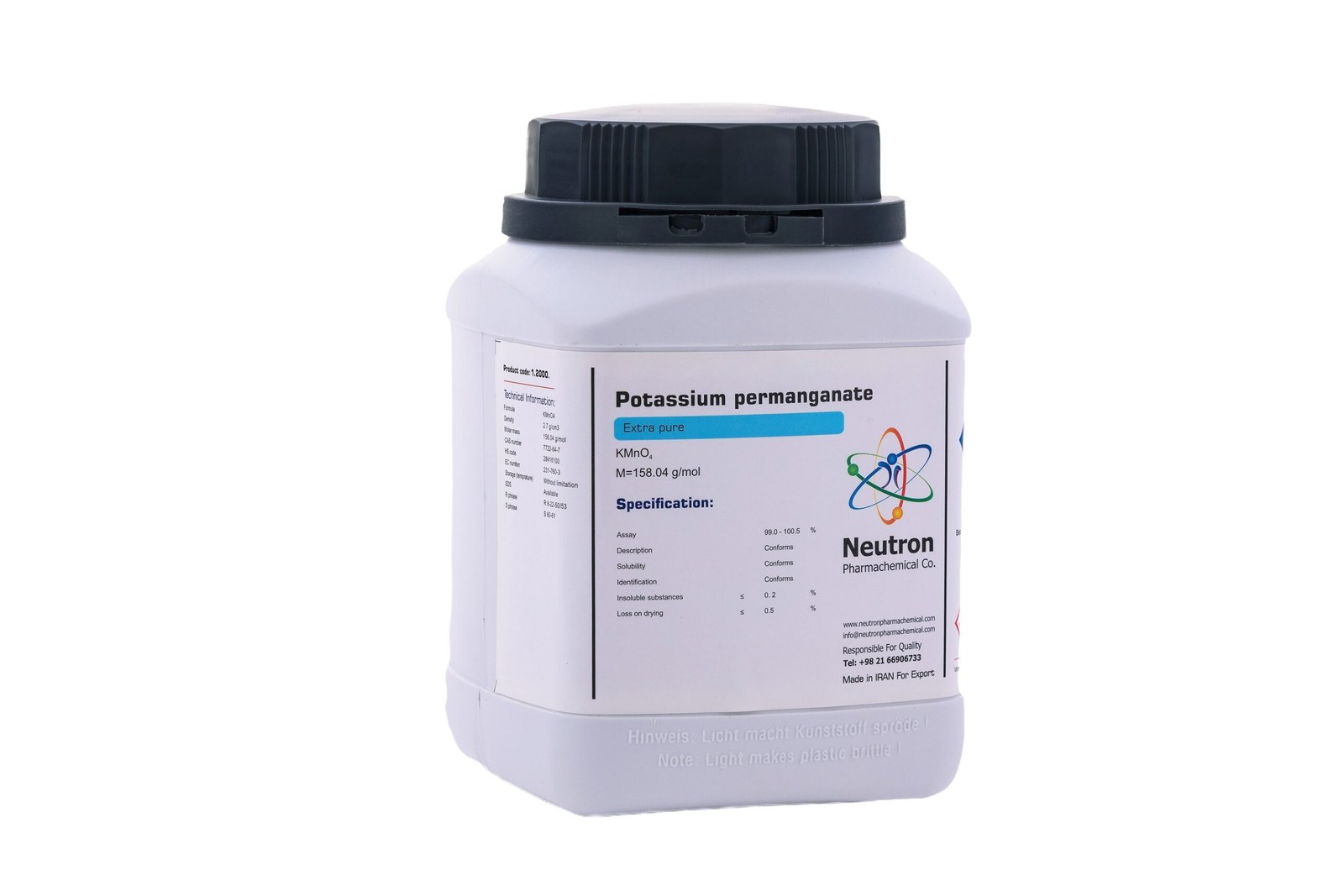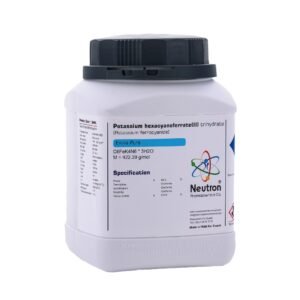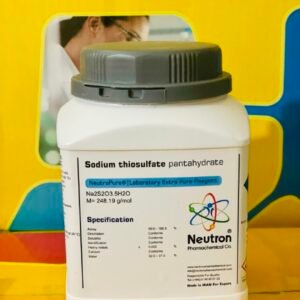پتاسیم پرمنگنات
| Formula | KMnO4 |
| Density | 2.7 g/cm3 |
| Molar mass | 158.04 g/mol |
| CAS number | 7722-64-7 |
| HS code | 28416100 |
| EC number | 231-760-3 |
| Storage (temprature) | Without limitation |
| SDS | Available |
| R phrase | R 8-22-50/53 |
| S phrase | S 60-61 |
| Assay | 99.0 – 100.5 | % | |
| Description | Conforms | ||
| Solubility | Conforms | ||
| Identification | Conforms | ||
| Insoluble substances | ≤ | 0. 2 | % |
| Loss on drying | ≤ | 0.5 | % |
Potassium permanganate is a dark purple crystalline compound known for its strong oxidizing properties and wide use in disinfection, water treatment, and chemical synthesis.
🏭⚗️ Production
Potassium permanganate is produced industrially by oxidation of manganese dioxide (MnO₂) with potassium hydroxide and an oxidizing agent like potassium nitrate or air, followed by purification and crystallization of the KMnO₄ product.
🔬 Properties
Potassium permanganate appears as dark purple or almost black crystals with a metallic sheen. Its chemical formula is KMnO₄, and it has a molar mass of approximately 158.04 g/mol. It is soluble in water, forming a pink to purple solution. It decomposes upon heating and is a strong oxidizer, especially in acidic or warm conditions.
🧪 Applications
Potassium permanganate is widely used for disinfecting drinking water, treating skin conditions, and removing iron and hydrogen sulfide from well water. In laboratories, it serves as a titrant in redox reactions and is used in organic synthesis as an oxidizing agent. It is also used in the treatment of wastewater and as a preservative for fruits.
⚠️ Safety
Potassium permanganate is a strong oxidizer and can cause burns upon contact with skin or eyes. It may ignite flammable materials on contact. Inhalation of dust or ingestion can be harmful. Protective gloves, goggles, and proper ventilation are essential during handling. It should be stored in a tightly sealed container away from heat, acids, and organic materials.




